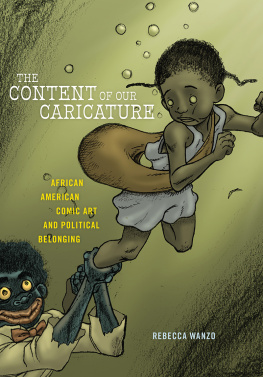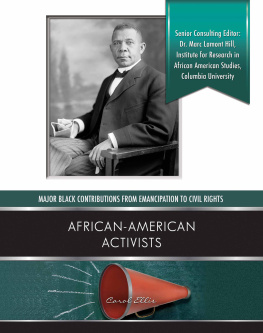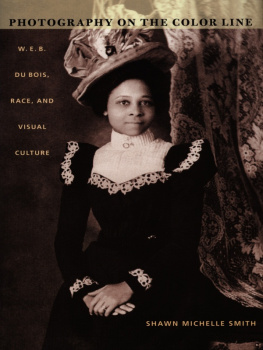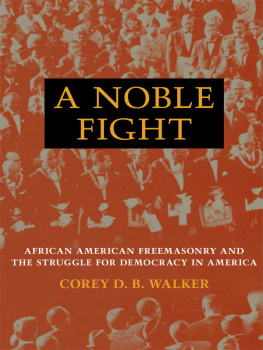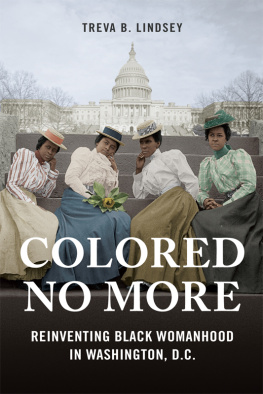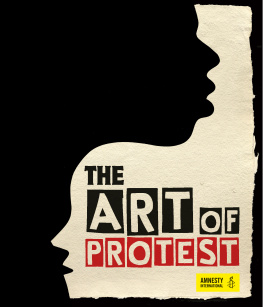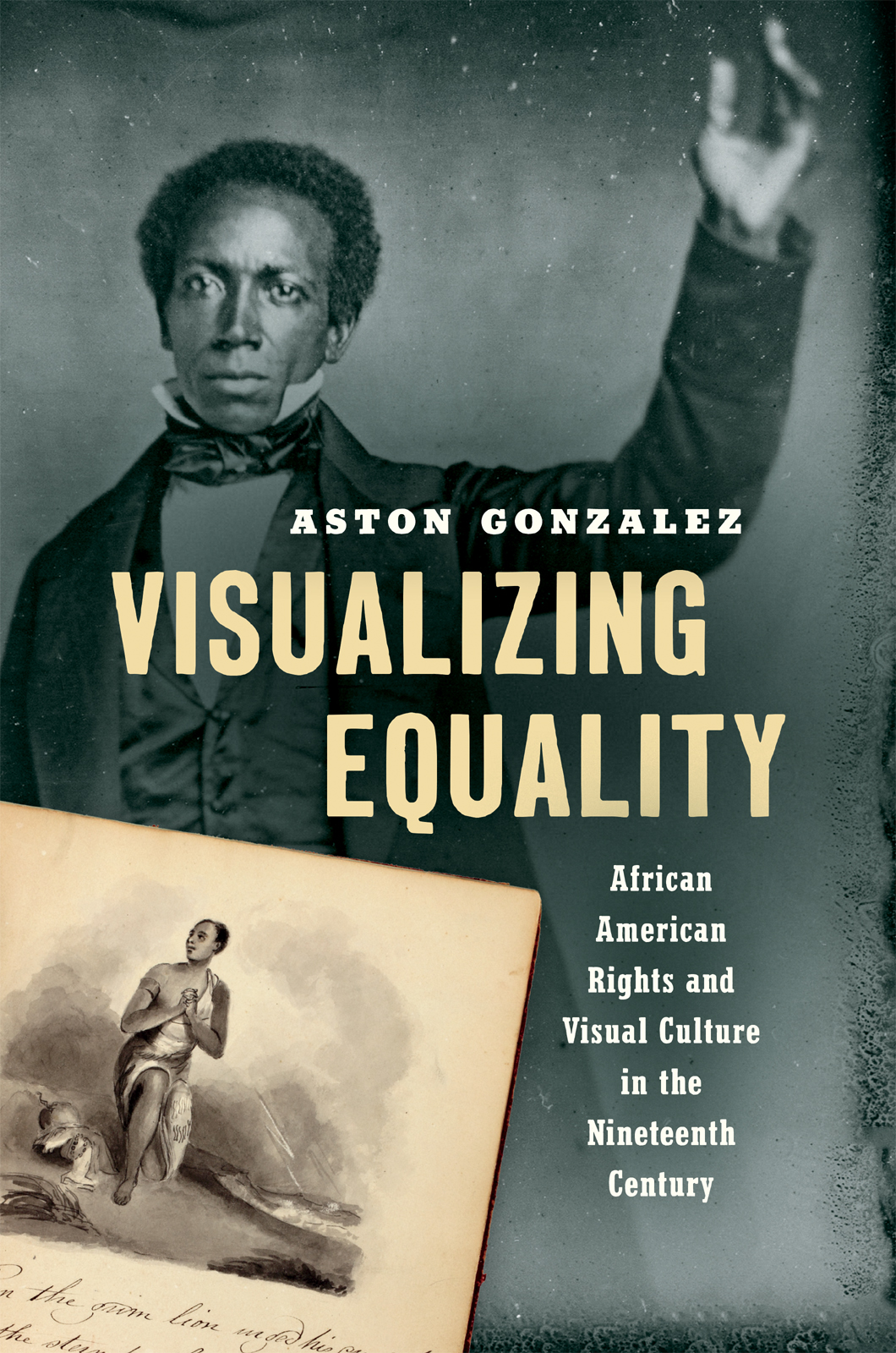VISUALIZING EQUALITY
African American Rights and Visual Culture in the Nineteenth Century
ASTON GONZALEZ
THE UNIVERSITY OF NORTH CAROLINA PRESS
Chapel Hill
This book was published with the assistance of the John Hope Franklin Fund of the University of North Carolina Press.
2020 The University of North Carolina Press
All rights reserved
Designed by Jamison Cockerham
Set in Arno, Cutright, Irby, and American Scribe by Tseng Information Systems, Inc.
Cover illustrations courtesy of the Library Company of Philadelphia and the Library of Congress Prints and Photographs Division.
Manufactured in the United States of America
The University of North Carolina Press has been a member of the Green Press Initiative since 2003.
LIBRARY OF CONGRESS CATALOGING-IN-PUBLICATION DATA
Names: Gonzalez, Aston, 1986 author.
Title: Visualizing equality : African American Rights and Visual Culture in the Nineteenth Century / Aston Gonzalez.
Other titles: John Hope Franklin series in African American history and culture.
Description: Chapel Hill : The University of North Carolina Press, 2020. | Series: The John Hope Franklin series in African American history and culture | Includes bibliographical references and index.
Identifiers: LCCN 2020007566 | ISBN 9781469659954 (cloth : alk. paper) | ISBN 9781469659961 (paperback : alk. paper) | ISBN 9781469659978 (ebook)
Subjects: LCSH: African American art19th centuryPolitical aspects. | African American artistsPolitical activity19th century. | African Americans in art. | Art and race. | African AmericansCivil rightsHistory19th century. | African AmericansRace identityHistory19th century. | Politics in art. | Civil rights movementsUnited StatesHistory19th century.
Classification: LCC N6538.N5 G65 2020 | DDC 709.2/396073dc23
LC record available at https://lccn.loc.gov/2020007566
Portions of originally appeared as Aston Gonzalez, The Art of Racial Politics: The Work of Robert Douglass Jr., 183346, Pennsylvania Magazine of History and Biography 138, no. 1 (January 2014): 537, and are printed here by permission of the publisher.
For my mother,
whose passions for reading and adventure
inspired my own
CONTENTS
FIGURES
ACKNOWLEDGMENTS
Instead of imagining this book as a representation of debts, I prefer to think of it as a statement of dividends. There are so many people and institutions to thank for their support and guidance which enabled me to tell the stories within these pages.
First and foremost, Martha S. Jones has been the consummate mentor, both in and out of graduate school. Learning the precision and effects of language over the years that we have worked together has been an exercise in growth and thoughtfulness. Her incisive feedback has broadened the scope of my thinking and made me ask difficult questions of the people and periods about which I write. Like no one else, she has trained me to think expansively, read deeply, and write concisely. Constantly on the lookout for opportunities to enrich my research and nudge me forward in my scholarship, she has shown me to doors that I never knew existed. Thank you, Martha.
I am very grateful for the longstanding support of my three other dissertation committee members who helped shape the foundations of this book. Mary Kelley has always lent her sharp eye and perspicacious mind to my project. Like Martha, she saw me through graduate school from my first semester at the University of Michigan, and I cannot imagine such a rewarding and productive intellectual experience without her. Her joy, energy, and encyclopedic knowledge inspired countless more hours reading in the stacks and archives. Alongside her, Kristin Hass and Kevin Gaines each pushed me to refine my ideas, polish my prose, defend my thoughts, and think long and hard about the framing of my research. Their feedback has been as invaluable to this project as it has changed the way that I have understood people to see, interpret, and respond to the world around them. I thank each of my committee members for their direction and encouragement.
Numerous institutions made this book possible through their generous financial support. The University of Michigan, Andrew W. Mellon Foundation, Ford Foundation, Woodrow Wilson National Fellowship Foundation, Social Science Research Council, and Salisbury University allowed me to conduct research at far-flung archives. These included the New-York Historical Society, American Antiquarian Society, Library Company of Philadelphia, Historical Society of Pennsylvania, Massachusetts Historical Society, Montana Historical Society, Historic New Orleans Collection, Cincinnati History Library and Archives, William L. Clements Library at the University of Michigan, Boston Public Library, Schomburg Center for Research in Black Culture, Connecticut Historical Society, Emory University, Moorland-Spingarn Research Center at Howard University, Swarthmore College, Haverford College, Cheney University, Presbyterian Historical Society, Smithsonian Institutions National Portrait Gallery, University Archives and Records Center at the University of Pennsylvania, Special Collections at the University of Manchester, the Bodleian Library at the University of Oxford, and Yale Universitys Beinecke Rare Book and Manuscript Library.
Curators and archivists were very generous with their time and resources. I especially thank Gigi Barnhill and Lauren Hewes, who made my time at the American Antiquarian Society exceptionally rewarding when I was there as a Jay and Deborah Last Fellowship recipient. At the William L. Clements Library, Clayton Lewis was always enthusiastic about my projects and went out of his way to show and discuss with me more materials to aid in my scholarly development, and for that, I am very thankful. At the Library Company of Philadelphia, Phil Lapsansky and Erika Piola kept me busy studying and searching for primary sources while an Albert M. Greenfield Fellow. Phil was incredibly generous with his research notes and set me on the path to research more deeply the art and activism of Robert Douglass Jr. Erika, Krystal Appiah, Rich Newman, and especially Erica Armstrong Dunbar supported my work a few years later as an Andrew W. Mellon Postdoctoral Fellow at the Library Company of Philadelphias Program in African American History. Erica has always been there to offer advice on this book and to foster my growth as a historian. Whats more, she has been a tireless advocate of many other rising and established scholars. The other fellows at the Library Company of Philadelphia, especially Kabria Baumgartner, Emily A. Owens, and Emahunn Raheem Ali Campbell created a productive space for ideas and friendship. Many thanks to the archivists at the Emory Universitys Manuscript and Rare Book Library for their help guiding me to several of the sources in this book during a short-term fellowship I received one sweltering Atlanta summer. There, Randall Burkett shared documents and his passion for my project. Ann Shumard was incredibly generous to meet with me and let me view her personal archive of materials at the National Portrait Gallery. She directed me to periodicals unknown to me and helped provide more context from her exhaustive knowledge of early photography. A summer fellowship from Salisbury University also enabled me to explore the connections to England that several of the African American activists in this study forged abroad.


